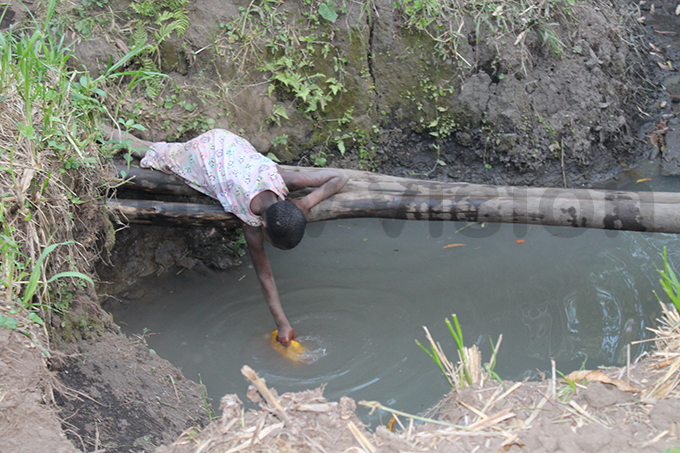Kabarole residents raise alarm over dirty water
Kabarole’s safe water coverage stands at 51.7%, which is below the national rural safe water level of 70%
Residents of Karambi and Harugongo sub-counties have raised alarm over the dirty water which they share with animals.
Several residents in the two sub counties have no access to clean water while others have to travel for several kilometers to access clean water. Most residents use dirty water for domestic purposes, exposing them to waterborne diseases.
"We have been suffering with water. We use water from the ponds which we share with animals, and for those who can afford to pay sh3000 for a jerrycan of water, they buy," Albert Mugisa a resident of Karambi said.
On Tuesday, Mugisa said the persistent shortage of safe water in the sub county affects sanitation and health, leading to waterborne infections.
"Diseases like diarrhoea, typhoid and dysentery have continued to affect many people in our communities. We do not have water and in most cases, we have to share water sources with animals," he said.
According to the 2016/17 statistics from the district health department, the causes of morbidity in both adults and children below five years, were waterborne infections. This was second to malaria, accounting for 8,087 (9%), followed by acute diarrhoea with 7,059 cases (10.7%), while typhoid fever contributed 3,487 (2.2%) cases.
Some residents have to endure a return journey of over 16km to fetch safe water.
Sunday Mwesige, a resident of Harugongo, said in some areas the water scarcity arises out of broken boreholes as well as drying springs and wetlands.

He said the district has been through dry spells and lack of access to fresh water sources.
"The situation is worse since many people cannot access safe water and many people spend most of their productive time searching for clean water," Mwesige said.
Ruhweza Kabajwisa, the LC1 chairperson for Kabande village in Karambi, said they had written several letters to the district administration about the water problem but nothing has changed.
Emmanuel Kagoro, the LCIII chairman for Karambi sub county, said that the sub county has no resources to provide clean water to the people.
"Our resource envelope is very small. We cannot do much to solve the problem so we only rely on stakeholders and other well-wishers," Kagoro said
Amon Murungi, the executive director for Rwenzori Child Help Foundation, on Tuesday while commissioning a shallow well in Karambi sub county, said they had embarked on the process of constructing shallow wells in the most affected areas.
"We are working with communities and the local leaders to ensure that people get clean water because people are suffering," Murungi said.
He said that currently they have so far constructed over eight shallow wells in the two sub counties and they intend to construct ten more.
Richard Rwabuhinga the district LCV chairperson for Kabarole said recently that they had partnered with National Water and Sewerage Cooperation to extend piped water to Harugongo sub county.
Kabarole's safe water coverage stands at 51.7%, which is below the national rural safe water level of 70%, according to statistics from Ministry of Water and Environment.